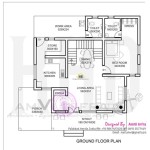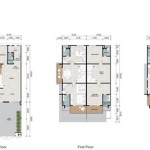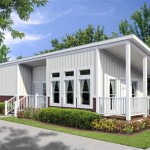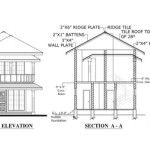Coastal House Plans With Elevator: Accessibility and Luxury Combined
Coastal house plans often evoke images of breezy living, expansive views, and a laid-back lifestyle. However, when considering the construction or renovation of a multi-story coastal home, accessibility is a crucial factor that should not be overlooked. Integrating an elevator into the architectural design provides a practical solution for homeowners of all ages and abilities, enhancing functionality and adding a touch of luxury. This article explores the benefits, considerations, and design aspects of coastal house plans incorporating elevators.
Elevators in coastal homes are no longer exclusively for those with mobility limitations. They represent a forward-thinking investment that caters to aging-in-place, accommodates guests with diverse needs, and simplifies everyday tasks like transporting groceries or luggage between floors. Furthermore, an elevator can significantly increase the resale value of a property, making it more attractive to a wider range of potential buyers.
Elevator Benefits: Accessibility, Convenience, and Future-Proofing
The primary benefit of including an elevator in a coastal house plan is improved accessibility. This is particularly important for individuals with mobility challenges, such as those using wheelchairs, walkers, or experiencing age-related limitations. Stairs can become a significant obstacle, restricting access to different levels of the home and limiting their independence. An elevator eliminates this barrier, allowing everyone to enjoy the full extent of the living space.
Beyond accessibility for those with mobility concerns, an elevator offers considerable convenience for all residents. Imagine effortlessly transporting groceries from the garage to the kitchen on the upper floor, moving heavy furniture during renovations, or carrying luggage to the guest suite without straining your back. The ease and efficiency provided by an elevator simplify daily routines and enhance the overall quality of life within the home.
Future-proofing is another compelling reason to consider an elevator. As homeowners age, their physical capabilities may change. Installing an elevator during the initial construction or renovation phase allows them to remain in their home comfortably and safely for years to come. This eliminates the need for costly and disruptive modifications later in life, providing peace of mind and preserving the value of the property.
Design Considerations: Space Requirements, Style Integration, and Coastal Compliance
Integrating an elevator into a coastal house plan requires careful consideration of several design factors. The available space dictates the type and size of the elevator that can be accommodated. Standard residential elevators typically require a shaft space of approximately 5 feet by 5 feet. However, compact models are available that can fit into smaller areas, such as converted closets or custom-built enclosures. It is essential to consult with an architect or elevator specialist to determine the optimal elevator size and placement for the specific floor plan.
The elevator's aesthetic should seamlessly blend with the overall style of the coastal home. The elevator cab's interior finishes, materials, and lighting should complement the existing décor, creating a cohesive and harmonious design. Options range from simple and functional designs to luxurious and customized interiors featuring wood paneling, mirrored walls, and elegant lighting fixtures. Attention to detail in the design process ensures that the elevator becomes an integral part of the home's aesthetic appeal.
Coastal environments present unique challenges to construction, including exposure to salt air, high winds, and potential flooding. Therefore, it is crucial to select elevator components and materials that are resistant to corrosion and moisture damage. Consider using stainless steel or other marine-grade materials for the elevator cab, doors, and mechanical components. In flood-prone areas, it is advisable to elevate the elevator machinery room to a higher level or implement flood-proofing measures to protect the equipment from water damage. Adhering to local building codes and regulations specific to coastal construction is paramount to ensure the safety and longevity of the elevator installation.
Types of Elevators: Hydraulic, Traction, and Pneumatic
Several different types of elevators are suitable for residential applications, each with its own characteristics and advantages. Hydraulic elevators are a traditional option that uses a hydraulic piston to raise and lower the elevator cab. They are typically less expensive than other types but require a dedicated machine room to house the hydraulic pump and controller. Hydraulic elevators are known for their smooth and quiet operation.
Traction elevators utilize a system of cables and pulleys to move the elevator cab. They are more energy-efficient than hydraulic elevators and require a smaller machine room or can be configured without one (machine-room-less or MRL elevators). Traction elevators offer faster travel speeds and are suitable for taller homes with multiple floors.
Pneumatic elevators, also known as vacuum elevators, use air pressure to lift and lower the elevator cab within a cylindrical shaft. They are self-contained units that require minimal space and can be installed relatively quickly. Pneumatic elevators are a popular choice for retrofitting existing homes or for situations where space is limited. They offer a modern and visually appealing design.
The selection of the appropriate elevator type depends on several factors, including the budget, available space, building height, and desired performance characteristics. Consulting with an elevator professional is essential to determine the best option for the specific requirements of the coastal house plan.
Planning and Installation: Permits, Contractors, and Maintenance
Before commencing the installation of an elevator, it is imperative to obtain all necessary permits from the local building authorities. The permitting process typically involves submitting detailed architectural plans, elevator specifications, and electrical diagrams for review and approval. Ensuring compliance with all applicable building codes and safety regulations is critical to avoid delays and ensure the elevator's safe operation.
Selecting a qualified and experienced elevator contractor is crucial for a successful installation. The contractor should possess the necessary expertise in elevator design, installation, and maintenance. Check their credentials, licenses, and insurance coverage before hiring them. Obtain multiple bids from different contractors and carefully review their proposals, including the scope of work, timeline, and cost estimates.
Regular maintenance is essential to ensure the safe and reliable operation of the elevator. Establish a maintenance schedule with a qualified elevator service company to perform routine inspections, lubricate moving parts, and address any potential issues before they escalate into major problems. A well-maintained elevator will provide years of trouble-free service and contribute to the overall value and enjoyment of the coastal home.
In conclusion, integrating an elevator into coastal house plans provides a valuable combination of accessibility, convenience, and future-proofing. Careful consideration of design factors, elevator types, and installation procedures is essential to ensure a successful and seamless integration. By investing in an elevator, homeowners can enhance the functionality, comfort, and long-term value of their coastal property.

Southern Coastal Home Plan With Elevator And Split Bedrooms 65647bs Architectural Designs House Plans

Coastal Stilt House Plan With Elevator And Second Level Living Space 765044twn Architectural Designs Plans

Shelter Cottage Piling Foundation With Elevator 2466 Sf Southern Cottages

3 Level Coastal House Plan With Elevator And 2 Bunk Rooms 970090vc Architectural Designs Plans

Plan 44164td Elevated Cottage House With Elevator Coastal Plans Beach

Schooner Bay Coastal House Plans From Home

Haven House Plan Sater Design Collection

Plan 44164td Elevated Cottage House With Elevator Plans Coastal Beach Interior

Coastal Home Plans Sater Design Collection

Floor Plans House With Elevators








